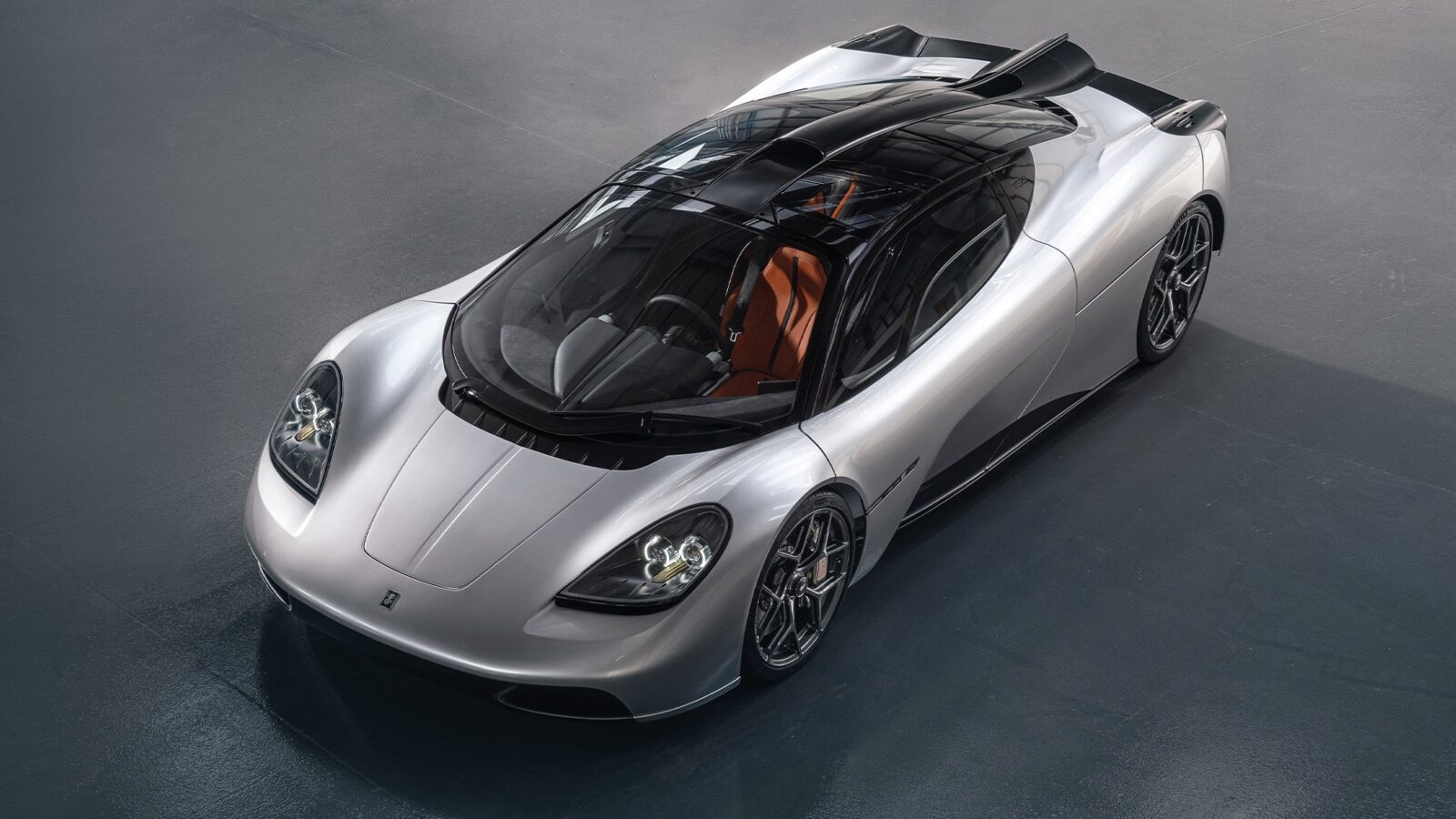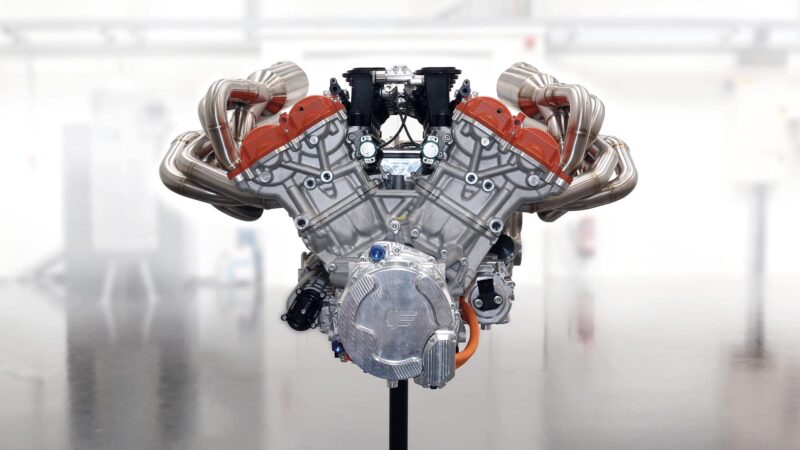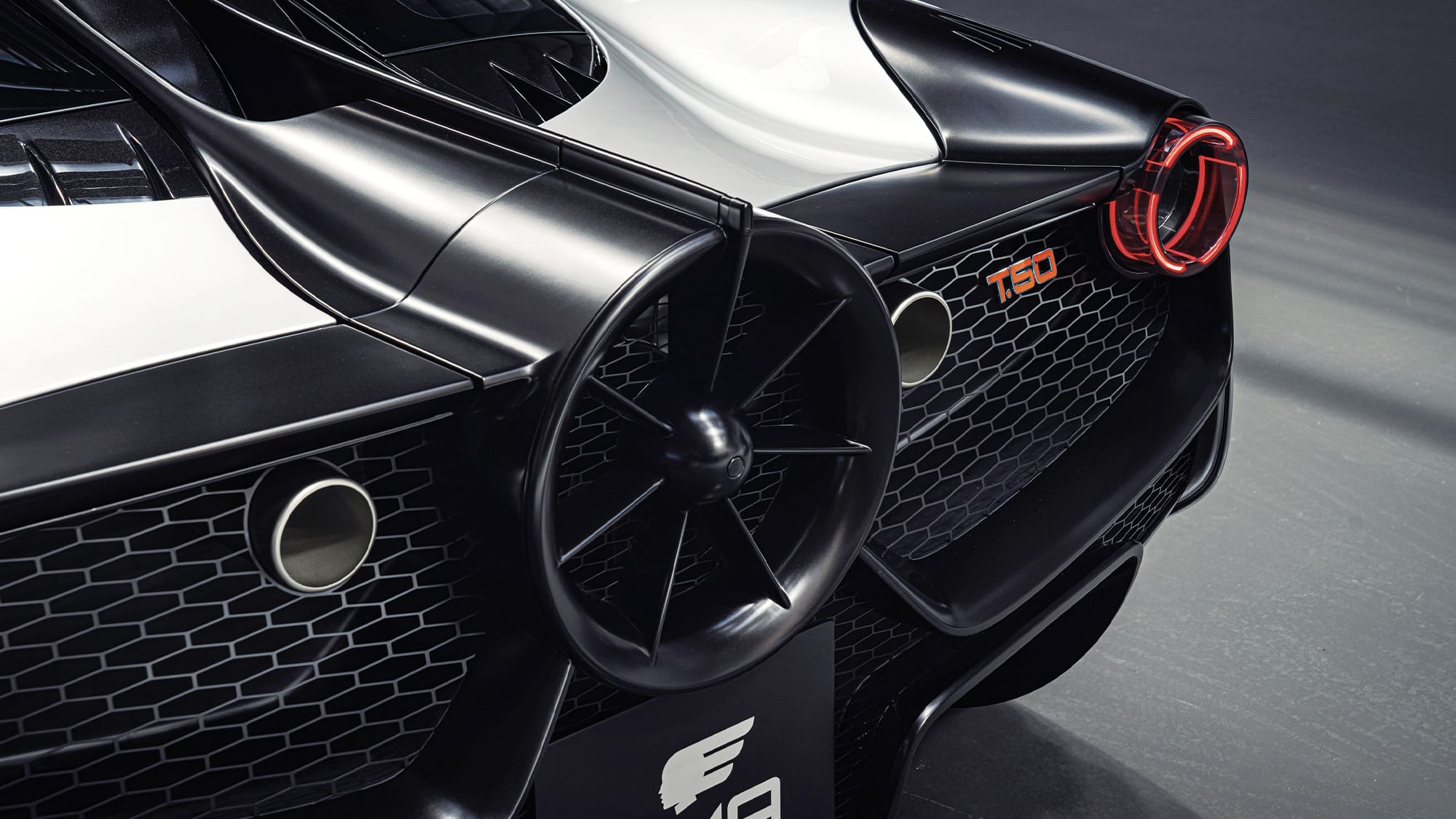Gordon Murray launches his T.50 McLaren F1 successor
New Gordon Murray Automotive T.50 is revealed, powered by a 650bhp V12 engine and with a downforce-assisting fan

While it may be near-impossible to write about Gordon Murray’s ground-breaking new T.50 supercar without mentioning it as a spiritual successor to the McLaren F1, Murray himself believes the new car more than makes up for deficiencies he was never happy with on the original.
Work on the T.50 – so named because it is Murray’s 50th career car design – began back in 2017, and the first prototype production car was unveiled in early August at the Surrey factory where full production is set to begin next year.
The T.50 is powered by a 650bhp 3.9-litre Cosworth-developed V12 and also boasts a downforce-assisting fan, drawing on Murray’s famous Brabham BT46B ‘Fan car’ Formula 1 design of 1978 (see below).
The car is predominantly made from carbon fibre, weighs just 986kg and features the same three-seat driving configuration as the McLaren F1, which Murray designed back in 1992.
Murray believes the T.50 to be the “logical successor” to the F1 and has labelled it as “the purest, lightest, most driver-focused supercar ever made.”
“I wanted my 50th car to be pretty special,” adds Murray, “and people have been asking for years what I was going to do after the F1. This is my answer.
“We’ve had time to consider everything in a way we didn’t really have with the F1. There are things about the McLaren that I still don’t like. We signed it off in clay and you can’t always see the highlights accurately. We’ve been really careful and methodical, and there’s nothing I don’t like. I think it should look pretty timeless.”

The bespoke Cosworth V12 has a limit of 12,100rpm, and can hit that in just 0.3sec
Just 100 road-going cars will be built, with deliveries starting from January 2022. Each car costs around £2.8m including taxes. Murray also has a plan for 25 further hardcore track-only cars, and has also revealed that he’s already been in talks with Le Mans organiser the ACO about a potential entry for the T.50 into the forthcoming LM Hypercar class. But at the moment he won’t be drawn on any specific racing plans.
Gordon Murray Automotive T.50’s fan assistance

Drawing on his experience with the Brabham BT46B – which Niki Lauda used to win the 1978 Swedish Grand Prix in its sole race outing before it was withdrawn – Murray has incorporated fan technology into the T.50.
“That [the BT46B] was a blunt instrument in comparison,” says Murray. “It was a vacuum cleaner. It had skirts around the outside and a big fan. This is far more sophisticated.”
The system on the T.50 uses a rear-mounted 400mm ground-effect fan driven by a 48v electric motor. All testing has been done in the Racing Point F1 Team’s wind tunnel using 40 per cent scale models. The T.50 offers several different driving modes to alter the dynamics of the car using the actions of the fan. They are:
Auto: Responds to driver input
Braking: Doubles the active downforce level and deploys rear aerofoils. Capable of shortening braking distances at high speed by 10 metres
High Downforce: Increases downforce by 30 per cent
Streamline: Reduces drag by 10 per cent, increasing top speed and cutting fuel consumption. Also shuts under-body ducts and creates a ‘virtual long tail’ effect
V-Max: Aimed at top speed runs, allows an extra 30bhp boost from the starter motor.
